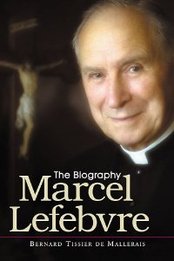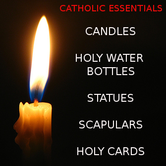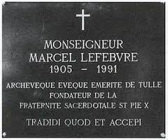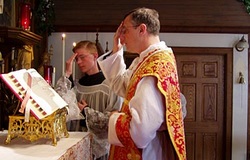
The Second Part - From the Introit to the Credo.
It is usually in the Introit that the Church proposes the subject of the feast that is celebrated. Mention is therein made of some divine mystery, of the Blessed Virgin, or of some other saint whom the Church honors on that day, so that we simply render this honor to the saint, since the sacrifice, as we have said, is offered only to God. It is asserted that the author of the Introit is St. Gregory the Great, as may be seen in the works of Benedict XIV.
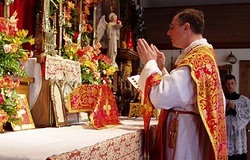
Gloria in excelsis Deo, etc. (“Glory be to God on high, etc.”). This prayer canticle or is formed of the words that the celestial choirs used when the Angel came to announce to the shepherds the birth of the Saviour; “Glory to God in the highest : and on earth peace to men of good will.” The remaining words were added by the Church. In it God is thanked for his glory, because God has used our salvation for his glory by saving us through Jesus Christ, who, in offering himself as a sacrifice to his Father, has procured salvation for men, and has given, at the same time, infinite Glory to God. Then the Church, addressing herself to Jesus Christ, asks him by the merits of his sacrifice to have pity on us; and she concludes by proclaiming him: Quoniam tu solus Sanctus, tu solus Dominus, tu solus Altissimus, Jesu Christe, cum Sancto Spiritu in gloria Dei Patris. Amen (“For Thou only art holy; Thou only art Lord;Thou only, O Jesus Christ, art Most High in the glory of God the Father. Amen”). For our Saviour, who sacrifices himself as a victim, is at the same time God,equal to Him to whom the sacrifice is offered.
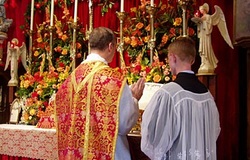
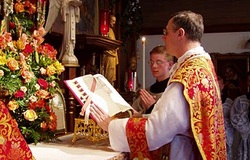
The Epistle is followed by the Gradual, which, according to Bellarmin, was sung in former times while the deacon ascended the steps of the ambo an elevated pulpit to read the Gospel. The Gradual was followed by the Alleluia, a Hebrew word that signifies Praise the Lord. But in Lent the Alleluia, which expresses joy, is replaced by the Tract, which Abbot Rupert calls the lamentation of penitents (Poenitentium lamentum).
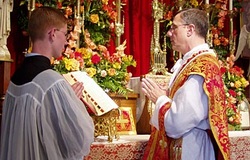

Part 3 Part 1
